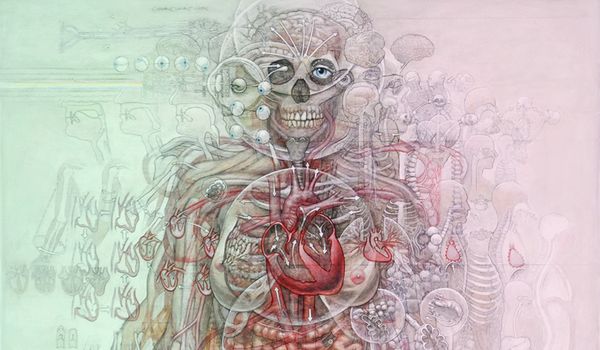Peter Sjöstedt-H • • 30 min read
Panpsychism: 3 Reasons Why Our World is Brimming with Sentience

Panpsychism
3 Reasons Why Our World is Brimming with Sentience
– Peter Sjöstedt-H –
MMXVIII
‘We must learn to understand nature from ourselves, not ourselves from nature.’[1]
– Schopenhauer
To listen to this article, please scroll to the bottom.
The word panpsychism is a Renaissance compound [2] of Ancient Greek pan (all) and psyche (mind, or soul). It is thus the doctrine that minds exist fundamentally [3] throughout all of actuality [4] – from humans, to hawks, honeybees through to trees, down to bacteria, mycelia, molecules, and the subatomic below these. All of matter includes minds. Panpsychism is, in itself, a secular doctrine unlike pantheism (that nature is God) and unlike animism [5] (that rivers and winds, etc., each have a spirit). It is generally unlike idealism in that it takes matter to be real [6] rather than ideal (as mere projection of the mind); it is generally unlike dualism in that it does not take mind to be separate from matter, but rather takes mind to be a part of matter; [7] and it is unlike physicalism as understood to imply that most matter be insentient. [8]
Panpsychism differentiates within the suffix psyche a vast variety of states of sentience, and it mostly attributes sentience to autopoietic (self-systematic) entities such as organisms and molecules, rather than to aggregates thereof, such as rocks and radiators. In the hierarchy of states of mind, ‘consciousness’ is an uncommon complex crown of sentience. All has mind though not all has consciousness, let alone self-consciousness. Even Plato acknowledged such distinctions, stating that:
‘The plant … is without belief or reason or understanding but has appetite and a sense of pleasure and pain.’ [9]
As it stands, panpsychism bears a proud history of eminent thinkers – from the very beginnings of western philosophy via thinkers such as Thales and Heraclitus, through to great Renaissance figures such as Patrizi (who coined the term panpsychism) and Bruno, to the mind-matter cognoscenti of the modern era: Spinoza, Leibniz, Schopenhauer, William James, A. N. Whitehead, and arguably Bertrand Russell to name but a small number. [10] The last few decades have brought a renewed interest and advocacy for the theory from the likes of Thomas Nagel, Galen Strawson and David Chalmers.
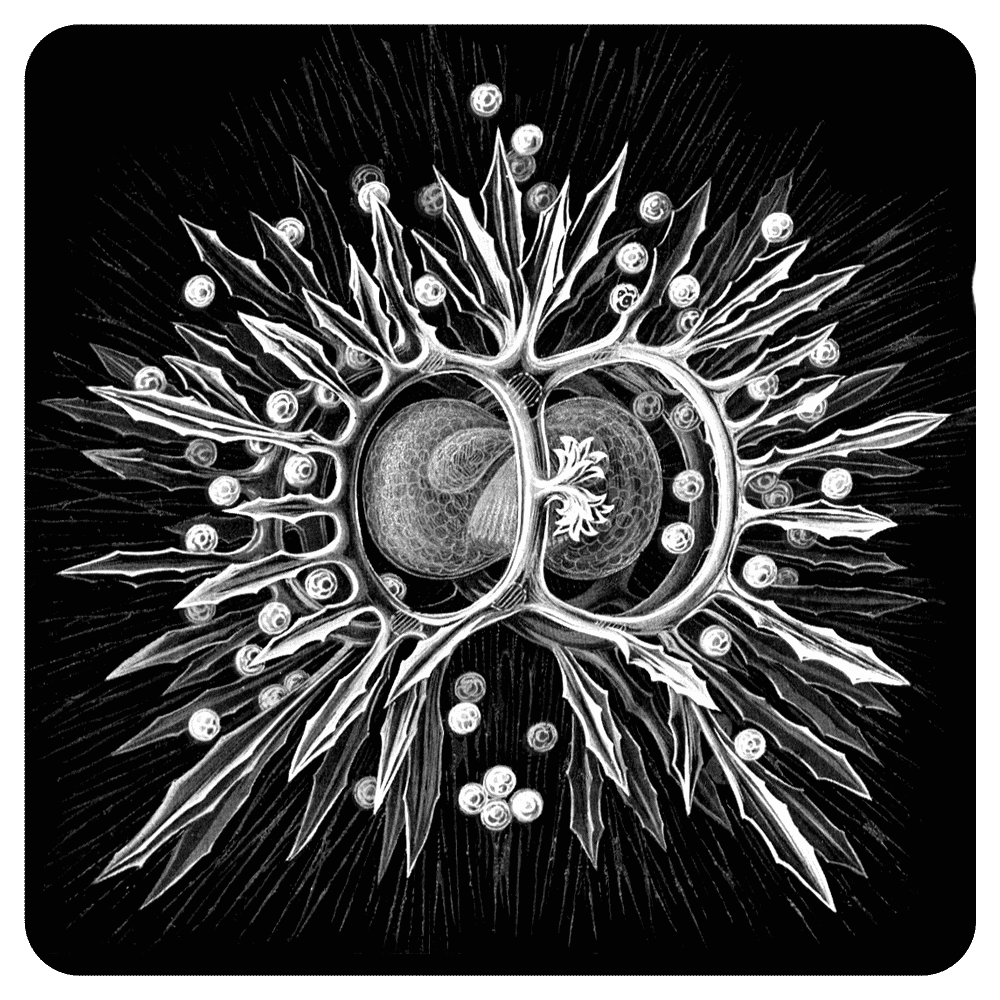
It was Chalmers who renamed the mind-body, or mind-matter problem as the ‘hard problem of consciousness’,[11] and it is perhaps the renewed interest in this problem that has fueled re-interrogation of panpsychism as its solution. The mind-matter problem, the problem of understanding the relation between mind and matter, has brought human understanding to an impasse. The question is how something describable in physical, spatiotemporal terms, such as neuronal activity, can relate to something that cannot be described spatiotemporally, such as pain or curiosity. We know that mind and matter can be correlated, but we do not know the nature of that correlation. Psycho-neural identity theory asserts that a mental state simply is its correlated brain state, but a problem therewith is multiple realization: a mental state such as hunger can be correlated to a human brain state but also presumably to, say, an octopus brain state[12] – thus indicating that the mental state cannot be identical to a human brain state. A more popular proposed solution today is emergentism: that mental states emerge from physical states. The problem here is that there are no known ‘bridge laws’ that could describe how such emergence takes place (how physical movement could transition into that which is not physically describable), not to mention the problem of mental causation, as we shall see below. There are other more extreme proposed solutions to the mind-matter problem, such as physicalist eliminativism which denies the existence of mind, and its contrary subjective idealism which denies the existence of matter. Though the first appears oxymoronic, and the latter darkly solipsistic, whatever the solution to the problem is, we know it will be radical. From this background map of mind-matter cul-de-sacs, panpsychism begins to be seen as a potentially clear exit road which may lead to a more comprehensive and parsimonious view of reality. But let us navigate through three [13] arguments for panpsychism to decipher it as a route to truth.
These following arguments – briefly: that the mental cannot emerge from ‘matter’, that ‘matter’ is but an abstraction, and that the brain is not a necessary condition for mentality – will be elucidated by combining and augmenting the thoughts of various thinkers. Thereafter certain reasons for the rejection of panpsychism will be considered – reasons histrionic, philosophic, cultural, and historic. Ultimately my intention is not merely to inform the reader as to what panpsychism is and why it is held, but to instill in the reader the cognizance that this mind-matter theory is not only an option that is serious, but moreover, the option most plausible.
The Genetic Argument
If one does not believe in panpsychism, [14] then one believes that sentience at one point in time emerged from, had its genesis in, insentient matter (lest it emerge from something non-physical). [15] By implication, if one does believe in panpsychism (P), one believes that sentience always existed with matter – and thus never emerged at a point in time, but was always co-present. Thus if we refute such emergentism (E), [16] we thereby advocate panpsychism: ~E = P.
But why should we reject the popular theory of emergentism? Eminent philosopher of mind, Jaegwon Kim has claimed that,
‘It is no undue exaggeration to say that we have been under the reign of emergentism since the early 1970s.’ [17]
However, despite being known as one of the greatest exponents of emergentism, Kim is wary of its truth:
‘The idea of emergence is an attractive, and initially appealing, one in many ways, and it is not difficult to understand its popularity. But it is not easy to make the idea precise and give it substantive content’. [18]
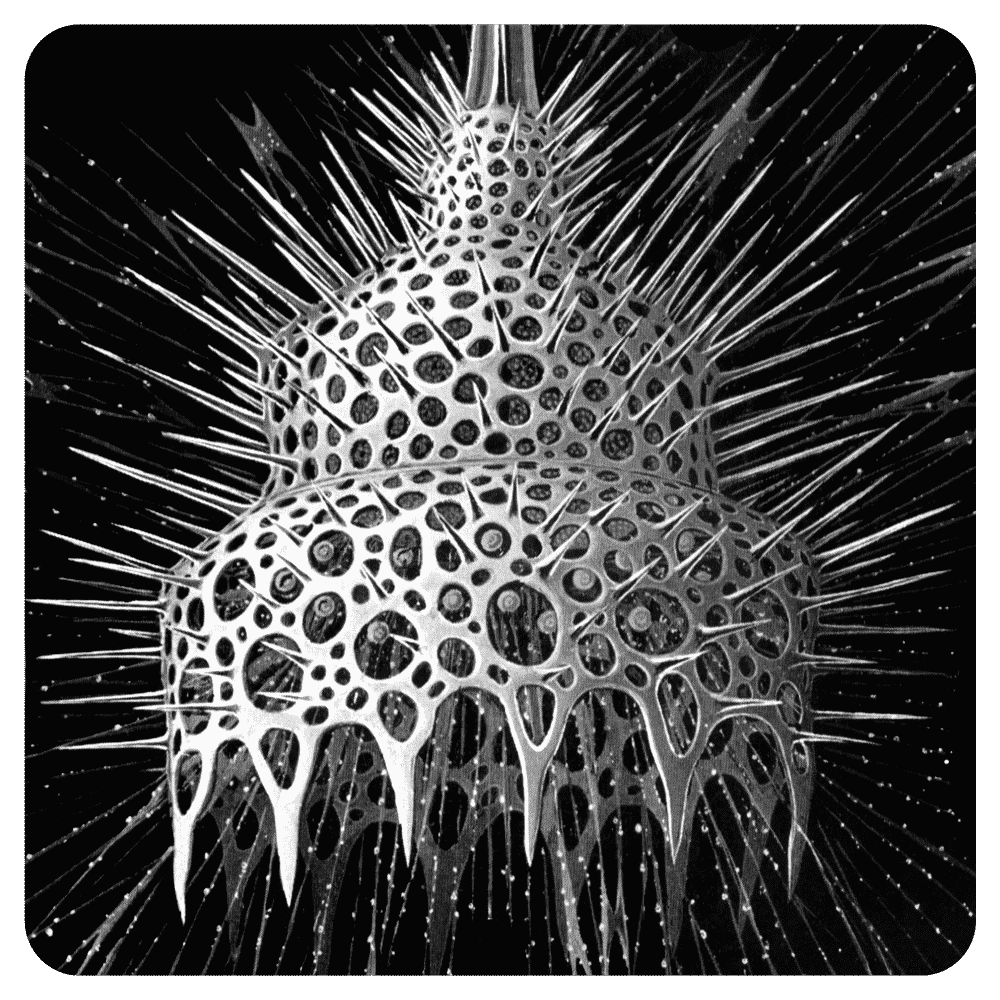
It is easy to say that mind emerges from certain, say, neurological activities in the brain. But substantiating what this word ‘emerges’ actually means and implies in such statements is far from easy. That a whirlpool emerges from water, or that water emerges from H2O molecules are examples of emergence that can be observed and explained using structural, i.e. primarily spatiotemporal, language. But that the patterned movement of particles in a brain makes emerge mental states that cannot be observed or described in structural, spatiotemporal terms, is a claim that is not scientific: it is not directly observable, it is not quantifiable, and there is no known transordinal nomology: no bridge laws that would explain the matter-mind emergence (laws that would have to cover more than the human species). One cannot ‘zoom into’ an emotion to observe that from which it has emerged – as one can zoom into a whirlpool or into water – thus applying the emergence observed in nature to explain the mind is a disanalogy, a category mistake. [19] We cannot simply infer that as chemistry emerges from physics, and as biology emerges from chemistry, so sentience emerges from biology. No: there are no known laws of nature that can render explicable the emergence of emotion from motion, of sentience from insentience.
Furthermore, emergentism, as a physicalist doctrine, cannot accommodate mental causation (that mental events such as desire can have an effect upon the world) – as mentality is not an accepted force of nature – yet most emergentists do not want to fall into epiphenomenalism (that mental states are powerless aftereffects of physical activity, the mere steam of a locomotive engine [20]). But not being able to accept nor reject mental causation is to have your cake and eat it, which is essentially a reductio ad absurdum, a reduction to absurdity, a fatal infliction to emergentism. Even Isaac Newton allowed for the possibility of mental causation, and with it the suggestion of panpsychism:
‘We find in ourselves a power of moving our bodies by our thoughts … and see the same power in other living creatures but how this is done and by what laws we do not know. … It appears that there are other laws of motion … [and this is] enough to justify and encourage our search after them. We cannot say that all of nature is not alive.’ [21]
If mental causation did not exist, i.e. if epiphenomenalism were the case, then the activity of reasoning – of working things out – would be useless; and our desires, beliefs, and ambitions would be without any efficacy upon the world. Karl Popper, whose philosophy of science has had a large effect upon science through his notion of falsificationism, argued that epiphenomenalism is an anti-evolutionary theory. [22] If the mind had no power it would not have evolved nor survived – not only in us humans but presumably in other organisms as well. Sentience serves us well, but this implies that the physicalist ontology upon which emergentism is founded is flawed. Ultimately it implies the irony that physicalism is an anti-evolutionary theory.
Moreover, emergentism is anti-evolutionary not only because it cannot account for mental causation but also because it implies an inexplicable jump in evolution. As William James stated,
‘Consciousness, however small, is an illegitimate birth in any philosophy that starts without it, and yet professes to explain all facts by continuous evolution.
If evolution is to work smoothly, consciousness in some shape must have been present at the very origin of things.’ [23]
There would be a monumental jump in the universe even with the simplest emergence of sentience: there would be a point in time, presumably concurrent with an organism, where there suddenly pierced into reality some kind of entity – with its own perspective – that was no longer fully structurally describable. This would have been an emergence of kind rather than an emergence of degree. For such a claim, the burden of proof lies upon the person who believes it rather than upon the panpsychist who denies its occurrence. The panpsychological position that there was no ‘big pang of consciousness’, as I call it, is the default position of the person who will not endorse such an extreme position for which the evidence of change is lacking.
The founder of population genetics, evolutionist Sewall Wright puts the case stronger still, claiming that:
‘[The evolution of a] new organ … involves nothing more mysterious than differential growth … . Emergence of [this kind] … poses no serious philosophical difficulty. Emergence of mind from no mind at all is sheer magic. … [M]ind must already have been there when life arose and indeed must be a universal aspect of existence…’ [24]
Wright points out that this alleged emergence would present the occurrence of magic not only during the course of evolution, but even during each pregnancy:
‘The emergence of mind in the course of individual development from the fertilized egg presents a similar problem and one that is an everyday occurrence instead of a single event in the remote past. It would appear that the mind of a human being must develop from something of the nature of mind in the fertilized egg and, back of this, in the separate germ cells and in the nucleic acid molecules.’ [25]
Sewall Wright was not the only renowned biologist who realized the genetic rationale for panpsychism: the founder of epigenetics, follower of Whitehead, C. H. Waddington also expressed the sentiment:
‘The idea that something of the same general kind as self-awareness may exist in inanimate systems is one which … is forced upon us by the demands of logic and the application of the evolutionary theory…’ [26]
To summarize: emergentism cannot explain ‘upward causation’ (matter-mind emergence) nor ‘downward causation’ (as mental causation). If we consequently reject emergentism, if we reject the notion that mind emerged and emerges from matter, then we ipso facto accept that mind always existed with matter: panpsychism – or, that it emerged from something other than matter such as a god. But let us leave the gods to themselves, and realize once more why panpsychism is not a religious stance based on faith, but a stance rooted in reason.
-
The Abstraction Argument
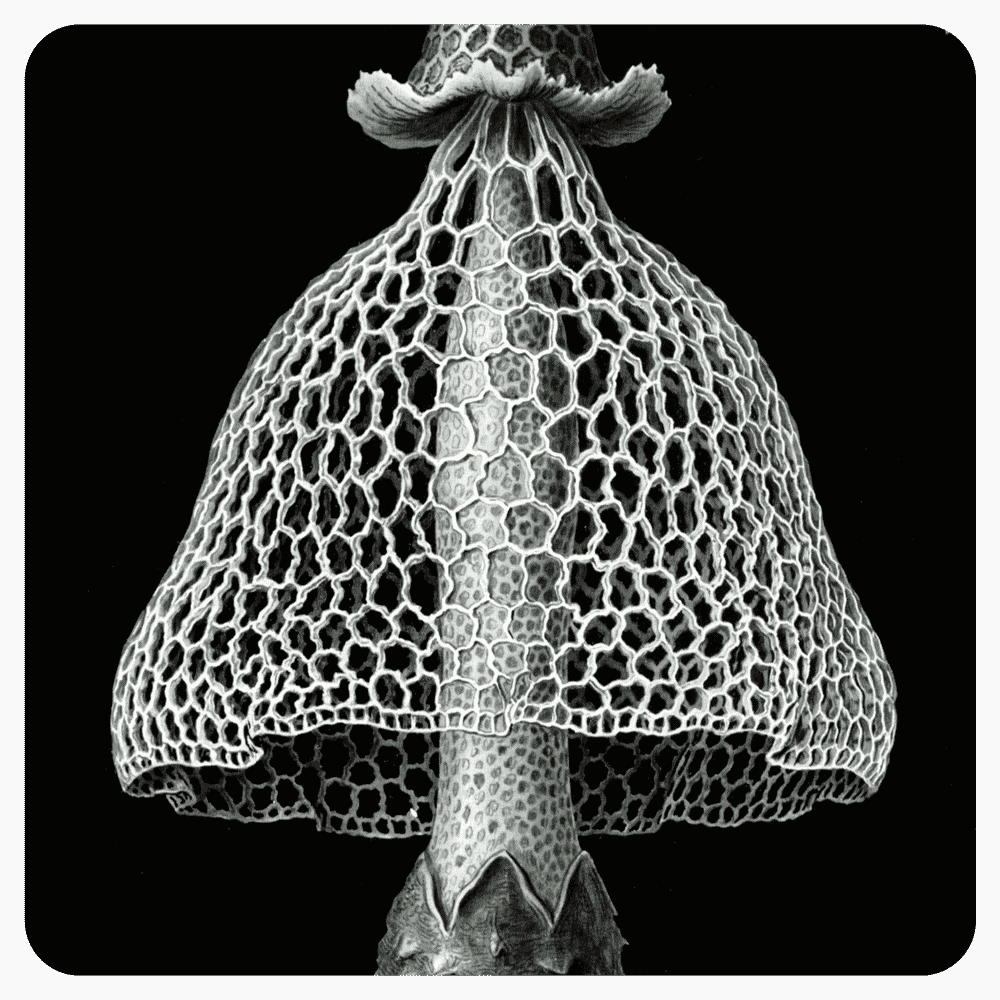
This argument advances the claim that our common notion of matter, or physicality, is merely an abstraction – that is, an incomplete understanding – that as such only exhibits certain external, structural (primarily spatial) properties to the exclusion of concrete intrinsic [27] properties, the latter of which are properties of sentience. Understanding matter structurally is akin to understanding a scallop as being merely its shell – panpsychism sees the inner life.
Schopenhauer claimed that the mind-matter problem was first discovered by Descartes. [28] Descartes’ concept of matter was austere in that it was sufficiently characterized by a single property: extension (spatiality). [29] This, Thomas Kuhn claims, [30] triggered the mechanistic understanding of nature (physicalism as mechanism). As our knowledge advanced over time, further properties were attributed to matter such as nuclear force, mass, decay, spin, subatomic differentials, [31] and so on. So we realize that former conceptions of matter were abstract as they excluded properties which we now consider essential to what matter is. Yet there is no reason to believe that we have reached a sufficiency in our understanding of matter.
Moreover, despite such advancements in physics, we still inherit the Cartesian dualist dichotomy of the fundamental separateness of matter and mind. A. N. Whitehead laments against this predicament by stating:
‘The disastrous separation of body and mind which has been fixed on European thought by Descartes is responsible for this blindness of science.’ [32]
The mechanical physicalism of science seeks ultimately to reduce mind to matter; idealism seeks to reduce matter to mind – but panpsychism seeks to fuse Descartes’ division by placing mind in matter. This means attributing to matter intrinsic, non-structural properties. A popular modern strand of panpsychism trades by the name ‘Russellian Monism’, [33] due to Bertrand Russell’s thoughts on such attribution:
‘physical events are known only as regards their space-time structure. The qualities that compose such events are unknown – so completely unknown that we cannot say either that they are, or that they are not, different from the qualities that we know as belonging to mental events.’ [34]
That is to say that we perceive certain outer structural, or relational, features of the matter surrounding us – e.g. an object’s size, shape, location, velocity, etc. – and can speculate whether, (a) matter has further intrinsic properties – known as ‘quiddities’ [35] – of which we are not privy, [36] and (b) whether such possible intrinsic properties are sentient in nature. We do have reason to suppose that there are such intrinsic properties which are sentient. In the words of David Chalmers:
‘There is only one class of intrinsic, nonrelational property with which we have any direct familiarity, and that is the class of phenomenal properties.’ [37]
T. L. S. Sprigge goes a step further in proclaiming that:
‘if the physical world has an inner being (as it must have, if it is not merely phenomenal, that is, a convenient fiction), that inner being must be psychical [sentient] if it is to be anything intelligible at all…’ [38]
Even Friedrich Nietzsche pushes this point in a causal manner:
‘The mechanistic world is thus imagined as the senses of vision and touch alone could envisage such a world (as in ‘motion’), so as to be predictable … [but] the will to power, which is not a being, not a becoming, but a pathos, is the most elementary fact … . Mechanics … does not so much touch the question of the nature of causal force.’ [39]
In sum, the mechanical, physicalist ideology only states what matter does, not what matter is; it only gives matter’s structure not its content.
We see that the notion of matter has evolved through history, from the Ancient Greek elements through to modern age matter-energy identities and quantum-physic oddities. It would not be prudent, viewing that history, to believe that we have today finally reached a complete, concrete knowledge of what matter is. It would be more imprudent still to believe that we can explain sentience through this current (deficient) understanding of matter – this is why the hard problem of consciousness is hard. In order to soften it, we can expand our notion of matter to include the internal aspect of the matter that we at least can be certain exists for ourselves: sentience. A full physical description of your body and behaviour will not be a full description of yourself: it will omit your sentience. Rather than be anthropocentric and reserve such sentience to ourselves, and in order to avoid the impasse of claiming the emergence of mind from dead, insentient matter, one achieves greater parsimony by attributing basic forms of sentience to all of matter. In this way, mind does not magically emerge from matter but is always part of matter – and the dichotomy between them is thereby seen as false. All of reality is alive, it is our conceptualization that creates the illusion that most of nature is dead, that the shell alone is the organism – a mistake due to committing that which Whitehead calls ‘the fallacy of misplaced concreteness’. Even a corpse will contain a multiplicity of sentiences, though no longer unified by the higher, deceased one. Echoing the sentiment of Schopenhauer’s line that begins this article, Whitehead claimed that
‘It is the accepted doctrine in physical science that a living body is to be interpreted according to what is known of other sections of the physical universe. This is a sound axiom, but it is double-edged. For it carries with it the converse deduction that other sections of the universe are to be interpreted in accordance with what we know of the human body.’ [40]
This is essentially to say that our current form of science is not equipped to respond to the mind-matter problem. This is why we must seek more sufficient answers in metaphysics, and beyond proof we must employ abductive reasoning (inference to the best explanation) rather than inductive empirical verification. As one cannot directly observe the sentience of another, the scientific method is here not sufficient as it is based on the experience of structure, not the experience of other experience. Just as science cannot prove matters in mathematics or logic, so it cannot prove matters in metaphysics – and panpsychism is a metaphysical theory. Understand: the demand for empirical proof for mind-matter theories can only deliver solipsism, as one can here only strictly prove that one’s own consciousness exists.[41] Fortunately, knowledge transcends that gained by empirical proof.
-
The Inferential Argument

In outline, this argument advocates the position that one cannot consistently infer the existence of sentience in humans and other animals without inferring it to exist within all natural entities: panpsychism.
We infer that other humans have sentience. Perhaps, as some have argued, [42] we can directly experience others’ sentience – notwithstanding, we at least only infer that humans with whom we have not been in contact are sentient. [43] Most of us infer sentience to certain non-human animals – Descartes is possibly an exception as he considered animals to be automata (though he was not consistent as he also attributed feelings to magpies). [44] However, as we cannot acquire the report of consciousness from animals, we cannot establish direct neural correlates of consciousness (as this requires both mind and matter correlates). Thus our assumption of their sentience is not based on neurology so much as behaviour. Consider, especially, the octopus: its brain, two-thirds of which lie in its arms, is very dissimilar to our brain, yet the intelligent behaviour of the sea creature renders a denial of sentience to it implausible. Thus we do attribute sentience to it though we do not have a strict criterion by which we do so. So we can but infer sentience rather than verify it, and people will differ in their guessed inferences: some might stop sentience at the lobster limit, others might stop at the beetle border – but why stop at all? If one demands a stop, the determining criterion must be established.
If one proposes that such a criterion be that a being can sense and adapt to its environment, then one has almost become panpsychist by allowing for the sentience of plants. For instance, biologist Daniel Chamovitz writes that,
‘we now know that Arabidopsis [thaliana] has at least eleven different photoreceptors: some tell a plant when to germinate, some tell it when to bend to the light, some tell it when to flower, and some let it know when it’s night time. Some let the plant know that there’s a lot of light hitting it, some let it know that the light is dim, and some help it to keep time.’ [45]
Thus eyes are not required to perceive light, just as muscles are not required to move. Therefore if one wants a criterion that rules out plants as sentient, it cannot be based on the ability to sense or adapt. So a more commonly-held, stricter criterion for sentience is the possession of a complex nervous system, or a brain. One may believe this to be the case because one can gauge correlations between human brain events and mental events, via brain scans, brain damage, drug use, etc. Hence this mistaken argument:
- If brain then sentience [based on human neural correlates of consciousness]
- No brain [e.g. in a plant]
- Therefore, no sentience [i.e. in the plant].
But this argument is an obvious example of the fallacy of denying the antecedent (P –> Q, ~P, thus ~Q). [46] It is equivalent to arguing that if you drink hemlock you will die, you did not drink hemlock, therefore you will not die (an easy way to acquire immortality!). Just as there could be other ways to die other than by hemlock, so there could be other ways to have sentience other than by having a brain.
The philosopher Friedrich Paulsen, following the lead of renowned panpsychist and founder of psychophysics, Gustav Theodor Fechner, puts the point this way:
‘With what functions, with what marks that are lacking in plants, is inner life [sentience] connected?—Reference is made to the absence of a nervous system and brain. … [But] the syllogism is worthless. It is formulated on the plan: Horses dogs, and cats have legs, without which they cannot move; therefore creatures without legs cannot move. Snakes and worms contradict the syllogism.’[47]
There may be other systematic substrata of matter that correlate to sentience other than those of the animal brain. If one believes in the possibility of machine, or robot sentience, one cannot disagree. Plants do not have neurons but they have other parts by which they transmit information, as do single-celled organisms, viruses, molecules and more. The point is made by the distinguished mycologist Paul Stamets about fungi, a kingdom more related to animals than to plants:
‘I see mycelium [mushrooms’ root network] as … an exposed sentient membrane, aware and responsive to changes in its environment. As hikers, deer, or insects walk across these sensitive filamentous nets, they leave impressions, and mycelia sense and respond to these movements.’[48]
That human sentience is correlated with neural activity (the neural correlates of consciousness) is not sufficient to establish a necessary condition for sentience, it only establishes a contingent condition. A human brain may be necessary for human consciousness,[49] but it cannot be deemed necessary for consciousness, let alone sentience – just as an orchestra is necessary for a symphony, though it is not necessary for music generally, let alone sound.
Thus we have no logical reason to limit the inference of sentience to creatures with brains. And if we limit the inference to behaviour or sensation, we would then have to include plants, fungi, viruses, and other microbes as well – and this is nearing panpsychism already. Karl Popper relates the remarks of biologist H. S. Jennings, claiming that ‘in observing the behaviour of the amoeba, [Jennings] could hardly help attributing to it consciousness’.[50] Now someone might retort that though such behaviour looks as if it were conscious, it can nonetheless be described solely by physical mechanism. But this is a weak retort because one could also describe a human solely by physical mechanism (the movement of nerve impulses, neurotransmitters, muscle contraction, etc.) – yet this would not thereby refute the existence of the human’s sentience.
It may be further retorted that though we may justifiably attribute sentience to organisms, we do not have the justification to transgress this limit to include sentience within the inorganic – so though an amoeba would have a touch of sentience, a molecule would not. This response is conditioned by a belief that there is a natural dichotomy between the organic and the inorganic. This assumption is rejected by thinkers such as Leibniz [51] and A. N. Whitehead, and is the reason for the latter naming his metaphysics ‘the philosophy of organism’ – a philosophy encapsulated within his line that:
‘Biology is the study of the larger organisms; whereas physics is the study of the smaller organisms.’ [52]
This is to say that there is no natural delineation between what we call the living and the non-living: if we give sentience to a fungus, to a cell, to a virus, to an ‘organic molecule’, then the continuation to other types of molecule with their autopoietic, systematic maintained characteristics and behaviour faces no natural barrier[53] (though not all aggregates are such ‘organisms’: clouds and cliffs are not sentient as such, but are collections of comprising sentiences/organisms). Consequently, as we have no criterion by which we can stop the inference of sentience to creatures without brains, nor to the so-called ‘inorganic’ – and as we do have a reason to extend it down (to avoid the magic of emergentism and epiphenomenalism [the Genetic Argument], and to bestow an immanence to structural matter [the Abstraction Argument]) – the inference of sentience is extended all the way down through nature: panpsychism.
Why Panpsychism is Spurned
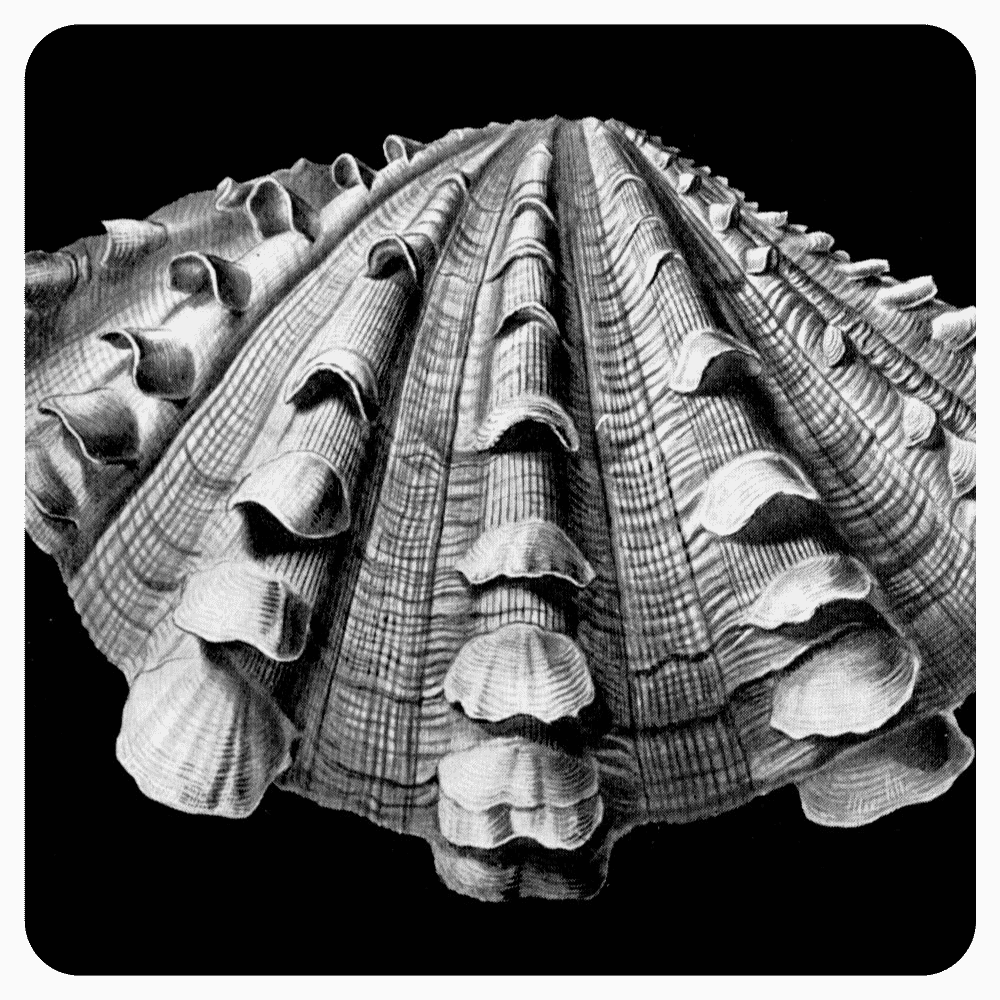
Above are but three intertwined arguments for maintaining that mind, in at least its simpler forms, is found beyond the brain, in simpler entities. Once one becomes accustomed to the idea, its logic and parsimony, the incredulous stares one receives for accepting panpsychism are met with the same repose as that from the stares an evolutionist might receive from a medieval Christian congregation. But why is panpsychism spurned today if it holds such rationale? I shall but outline a few possibilities.
Firstly there are common misunderstandings about what panpsychism is, and therefore it is often the victim of the straw man fallacy. Panpsychism does not maintain that chairs, tables, gates or stables, are sentient as such, as unified entities. There are no self-conscious sofas, contemplating their contemptuous, servile existence. Almost five hundred years ago, Giordano Bruno already made the point that one must distinguish between natural unified entities as those having mind, and aggregates of such units. [54] The distinction is common in the literature: Leibniz called such units monads, Whitehead called them organisms, Arthur Koestler called them holons. [55]
Another common misunderstanding is a belief in the success of alternate mind-matter theories. There is no agreed upon mind-matter theory, thus no default position to fall back upon, as though there were a standard. Even amongst the more physicalist mind-matter theories there exists a plethora of conflicting views such as eliminativism, behaviourism, functionalism, identity theory, biological naturalism, epiphenomenalism, anomalous monism, and emergentism. None of these are without serious problems, and so panpsychism does not challenge any established alternate view.
Related to this misunderstanding is the belief, as mentioned, that a mind-matter theory needs to provide empirical ‘proof’ to be acceptable. This is partly a legacy of the now disowned epistemology of Verificationism. [56] If this demand for proof were accepted, then no mind-matter theory bar solipsism would be acceptable. [57] And if one considers solipsism unacceptable, then the demand for empirical proof is not required for a mind-matter theory such as panpsychism. In matters of the mind we move from science to metaphysics, from verification to inference to the best explanation.
A more rational reason for spurning panpsychism is recognition of its inherent problematic issues, the most significant of which is known as ‘the combination problem’: [58] how it is possible for a multiplicity of sentiences to combine to form a unified sentience. This is an old problem stated by Ralph Cudworth in 1678,[59] and even Immanuel Kant in 1766.[60] There are numerous proposed solutions to this problem, foremost perhaps is its effacement through Whitehead’s metaphysical system. [61] We cannot enter the details of this issue here, but we can annul the problem as one specifically detrimental to panpsychism by highlighting the point that the combination problem is also a problem for physicalism – thus if we reject panpsychism because of the combination problem we must thereby reject physicalism as well. As David Chalmers writes,
‘Of course physicalism is faced with its own version of the combination problem: How do microphysical entities and properties come together to yield subjects, qualities, and so on? This challenge is presumably at least as hard as the challenge to panpsychism…’[62]
Another more basic criticism of panpsychism is that it is blatant anthropomorphism: attributing human characteristics (i.e. mentality) to non-human entities. There are two simple responses to this. Firstly, to attribute to nature the characteristic of being akin to that of man-made machines (mechanism) is also anthropomorphic – so the accusation cuts both ways. Secondly, to charge panpsychism of anthropomorphism is itself to commit anthropocentrism: to believe that we are unique, special in our sentience. To have such pre-judgement is of course to beg the question against panpsychism.
If we move back to view more historic reasons for the spurning of panpsychism, Descartes’ legacy comes into view. As quoted earlier, Whitehead blames Descartes’ mind-matter dualism for the blindness of today’s science. This may at first seem an odd accusation as current science mostly rejects such a dualism that posits the existence of a soul. But Whitehead’s point is that though the common scientific creed rejected Descartes’ notion of soul or mind, it accepted Descartes’ notion that nature itself was devoid of mind, being mere dead, mathematically-describable, mechanism. This dead, structural view of nature has been instrumental in the success of the technological progress of the industrial nations, but by extricating mind from matter this view has reached the impasse signaled by the ‘hard problem of consciousness’: one cannot regain mind from the mechanical matter from which it was expelled, one cannot regain the concrete from the abstraction. Trying to extract mind from this dead, abstract view of matter is as feasible as trying to extract apple juice from an oil painting of an orchard. Despite such difficulties, this view of normal science became prevalent with the consequence that panpsychism (where mind is part of matter rather than a product thereof) became heresy – the life of mentality had to submit to the laws of motion. Thomas S. Kuhn puts the predicament thus:
‘Normal science … is an attempt to force nature into the preformed and relatively inflexible box that the paradigm supplies … . [After Descartes], laws had to specify corpuscular motion and interaction, and explanation had to reduce any given natural phenomenon to corpuscular action under these laws.’ [63]
Strictly speaking, panpsychism is contrary to scientism rather than to science (if we take science to be a method rather than a dogma). Regardless, panpsychism, as well as transgressing the general scientific paradigm, transgresses the Christian one. Living under the shadow of both science and Christianity should make us wise to the legacy and interaction between the two, which is not always as antagonistic as is often believed. Descartes’ explicit aim in his Meditations on First Philosophy – wherein he divided nature into human souls and the mechanistic environment in which they found themselves – was to carry out the call of Pope Leo X to logically prove that the soul (which Descartes equated to mind) be distinct to the material body, so that life after death (in heaven or hell) be a logical view. Panpsychism per se does not need to make this afterlife claim: the death of the body implies the dissolution of the unifying sentience (the dominant monad, the holon) into its still unified smaller components – but the self as such dies. In panpsychism, mankind has no special status distinct to the other organisms, and as such is generally opposed to Christianity [64] and other Abrahamic religions. Moreover, panpsychism is more akin to the animistic, pagan religions that worshipped nature. Thus in Christendom, panpsychism has been contrary to both the religious and mechanistic ethos, resulting in its being shunned, disdained, and perhaps even purposefully suppressed: the Roman Inquisition burned the panpsychist Bruno on the stake in 1600.

The Whiteheadian philosopher Charles Hartshorne suggests that another more banal reason for the ‘disinclination of many to accept psychicalism [panpsychism] probably arises partly from the immense demands which the doctrine make upon one’s imagination’. [65] It is no easy feat to imagine the mind of a mantis, maple, or molecule; to fathom what it’s like to be a bat or a boson. But Hartshorne calls this error of dismissal due to imaginative failure the prosaic fallacy: ‘supposing the world to be as tame as our sluggish convention-ridden imaginations imply’. [66] If the prosaic fallacy is a reason for the rejection of panpsychism then at least there is an antidote, and quite literally a chemical antidote. William James, who at first criticized panpsychism, primarily by invoking the combination problem, [67] but who eventually came to accept and promote the theory, [68] gave clear guidance on how to transcend prosaic consciousness:
‘…nitrous oxide intoxication … forced upon my mind … [the idea that] our normal waking consciousness, rational consciousness as we call it, is but one special type of consciousness, whilst all about it, parted from it by the filmiest of screens, there lie potential forms of consciousness entirely different. … No account of the universe in its totality can be final which leaves these other forms of consciousness quite discarded.’ [69]
End Remarks
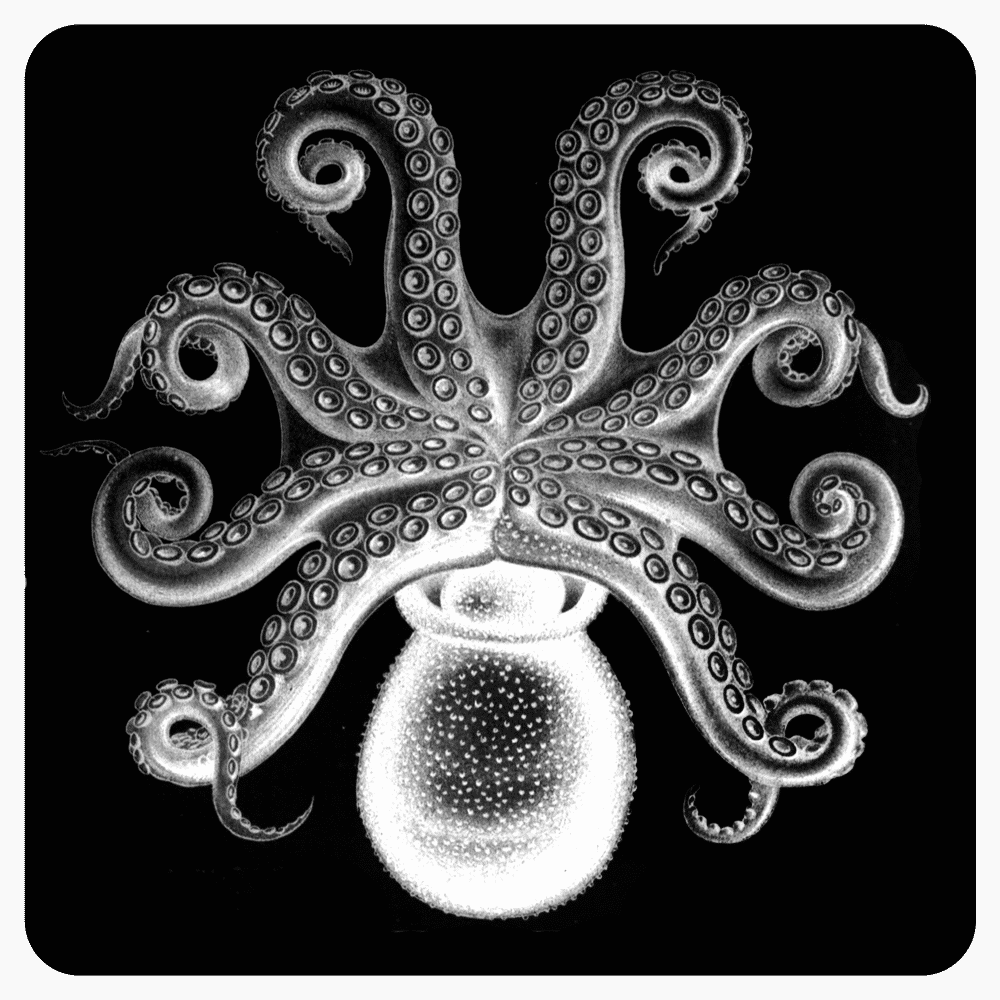
Thus the rejection of panpsychism can be overcome by logical analysis, historical and cultural reflection, and perhaps even by chemical ingestion. Logical analysis reveals the fatal flaws of physicalist mind-matter theories against which I have juxtaposed panpsychism as an alternate rational, parsimonious approach. The approaches of dualism and idealism can be seen as alternates to panpsychism too, but certain varieties are complementary. For instance, Karl Popper claimed that ‘Schopenhauer is a Kantian who has turned panpsychist’,[70] a phrase indicating the compatibility of his transcendental idealism and panpsychism. Schopenhauer’s work certainly shows the merits of genius, yet I believe that the greatest riches in the search for a satisfactory mind-matter theory will be unearthed with inspiration from the work of Alfred North Whitehead, ‘the most distinguished champion of panpsychism in the twentieth century’. [71] Our terminus therefore closes with his words:
‘The creativity of the world is the throbbing emotion of the past hurling itself into a new transcendent fact. … The notion of physical energy, which is at the base of physics, must then be conceived as an abstraction from the complex energy, emotional and purposeful …’[72]
Audio version of Panpsychism:
https://www.youtube.com/watch?v=B7B_RmZQp5Q&feature=youtu.be
Noumenautics: metaphysics – meta-ethics – psychedelics
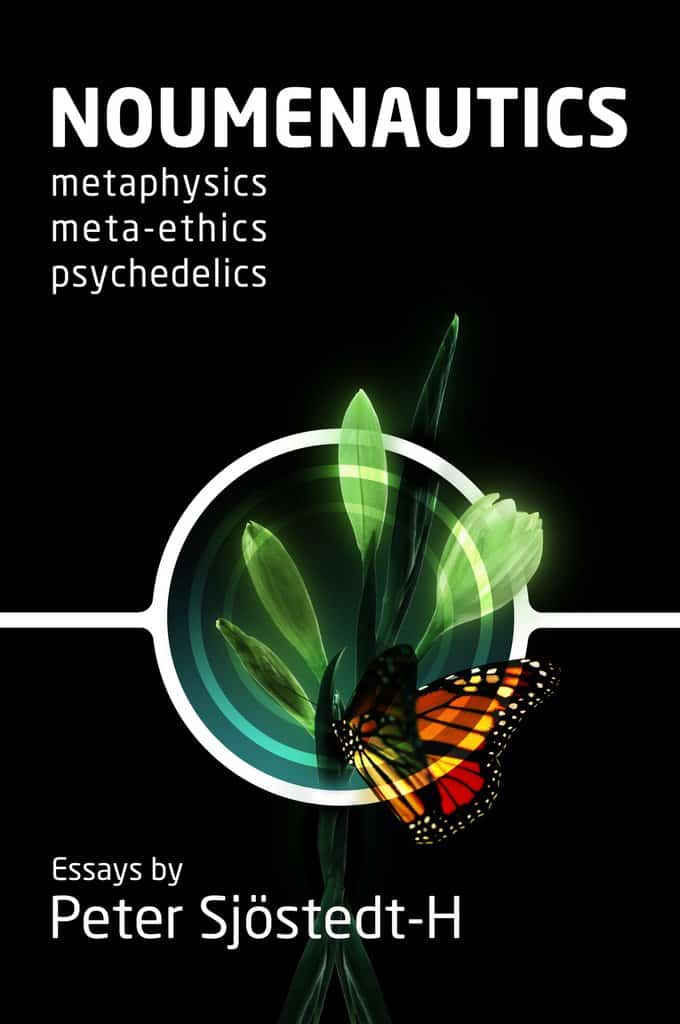
Philosopher Peter Sjöstedt-H’s Noumenautics traverses the mindscape of metaphysics, nihilism and psychedelic phenomenology. It navigates through subjects such as the sentience of cells, the constrictions of consciousness, the metaphysics of might, the magic of mushrooms, the narcotics of Nietzsche, and the neologism of neo-nihilism – the last of which may itself cause flashbacks.Tracing the fall of western morality through Kant, Schopenhauer and Nietzsche, the book descends deeper still into a metaphysics further upheld by Henri Bergson and Alfred North Whitehead. This collection of essays and notes provides a most idea-provoking, educational, and original piece of literature for the thoughtful lay-reader and specialist alike.
References
Alter, T. and Nagasawa, Y. (2012) ‘What is Russellian Monism’, Journal of Consciousness Studies, 19, pp. 67–95
Bruno, G. (1584/1998) Cause, Principle, and Unity, eds. R. Blackwell and R. deLucca (Cambridge: Cambridge University Press)
Chalmers, D. (1996) The Conscious Mind: In Search of a Fundamental Theory (Oxford: Oxford University Press)
Chalmers, D. J. (2016) ‘Panpsychism and Panprotopsychism’, in: Panpsychism: Contemporary Perspectives, eds. G. Bruntrup, G. and L. Jaskolla (Oxford: Oxford University Press), pp. 19–47
Chamovitz, D. (2012) What a Plant Knows: A Field Guide to the Senses of Your Garden – and Beyond (London: Oneworld)
Cobb, J. B. and Griffin, D. R., eds. (1977) Mind in Nature: the Interface of Science and Philosophy (Lanham: University Press of America)
Cottingham, J. (1978) ‘“A Brute to the Brutes?”: Descartes’ Treatment of Animals’, Philosophy, 53:206, pp. 551–559
Cudworth, R. (1678/1845) The True Intellectual System of the Universe (London: Thomas Tegg)
Descartes, R. (1996) Discourse on Method and Meditations on First Philosophy, ed. D. Weissman (New Haven & London: Yale University Press)
Edwards, P. (1967) The Encyclopedia of Philosophy, Vol. VI (New York: Collier-Macmillan)
Feigl, H. (1958) ‘The “mental” and the “physical”’, in: Minnesota Studies in the Philosophy of Science, Vol. II, ed. H. Feigl, et al. (Minneapolis: University of Minnesota Press)
Griffin, D. R. (1998) Unsnarling the World-Knot: Consciousness, Freedom, and the Mind-Body Problem (Eugene: Wipf & Stock)
Huxley, T. H. (1874) ‘On the Hypothesis that Animals are Automata, and its History’, The Fortnightly Review, 16, pp. 555–580
James, W. (1890/1950) The Principles of Psychology, Vol. I (New York: Dover)
James, W. (1902/1985) The Varieties of Religious Experience (London: Penguin)
James, W. (1908/2008) A Pluralistic Universe (Rockeville: Amor)
Kant, I. (1766/2002) Dreams of a Spirit-Seer and Other Writings, trans. G. R. Johnson and G. A. Magee (West Chester: Swedenborg Foundation)
Kim, J. (2006) ‘Emergence: Core ideas and issues’, Synthese, 151, pp. 547–559
Kim, J. (2010): Essays in the Metaphysics of Mind (Oxford: Oxford University Press)
Koestler, A. (1978) Janus: A Summing Up (London: Picador)
Kuhn, T. (1962/1970) The Structure of Scientific Revolutions, 2nd ed. (Chicago: University of Chicago Press)
Leibniz, G. W. (1675–1716/1989) Philosophical Essays, eds. & trans. R. Ariew and D. Garber (Indianapolis & Cambridge: Hackett)
Lewin, R. (1980) ‘Is Your Brain Really Necessary? John Lorber, a British neurologist, claims that some patients are more normal than would be inferred from their brain scans’, Science, 210, pp. 1232–1234
Nagel, E. (1961/1974) The Structure of Science, 4th ed. (London: Routledge & Kegan Paul)
Newton, I. (1704) Opticks, or a Treatise of the Reflections, Refractions, Inflexions and Colours of Light. Also Two Treatises of the Species and Magnitude of Curvilinear Figures (London: Smith & Walford)
Nietzsche, F. (2008) Beyond Good and Evil, trans. M. Faber (Oxford: Oxford University Press)
Nietzsche, F. (2017) The Will to Power, trans. R. Kevin Hill and M. A. Scarpitti (London: Penguin Random House)
Patrizi, F. (1591) Nova de universis philosophia (Mamarellus) [Original from the Bavarian State Library. Digitized, 2 March 2012]
Paulsen, F. (1895) Introduction to Philosophy, trans. F. Thilly (London: Kegan Paul, Trench, Trubner & Co.)
Plato (1965) Timaeus and Critias, trans. D. Lee (Harmondsworth: Penguin)
Popper, K. and Eccles, J. C. (1977) The Self and its Brain (New York: Springer)
Popper, K. (1978) ‘Natural Selection and the Emergence of Mind’, Dialectica, 32:3/4, pp. 339–355
Putnam, H. (1975) Mind, Language, and Reality: Philosophical Papers, Vol. 2 (Cambridge: Cambridge University Press)
Russell, B. (1948/2009) Human Knowledge (Abingdon: Routledge)
Schopenhauer, A. (1844/1966) The World as Will and Representation, Vol. II, trans. E. F. J. Payne (New York: Dover)
Seager, W. (1995) ‘Consciousness, Information, and Panpsychism’, Journal of Consciousness Studies, 2:3, pp. 272–288
Skrbina, D. (2007) Panpsychism in the West (Cambridge: MIT Press)
Sprigge, T. L. S. (1994) ‘Consciousness’, Synthese, 98:1, pp. 73–93
Stamets, P. (2005) Mycelium Running: How Mushrooms Can Help Save the World (Berkeley: Ten Speed Press)
Strawson, G., et al.; Freeman, A. (ed.) (2006) Consciousness and Its Place in Nature: Does Physicalism entail Panpsychism? (Exeter: Imprint Academic)
Tylor, E. B. (1871) Primitive Culture: Researches in to the Development of Mythology, Philosophy, Religion, Art and Custom, Vol. I (London: John Murray)
Waddington, C. H. (1961) The Nature of Life (London: George Allen & Unwin Ltd)
Whitehead, A. N. (1925/1997) Science and the Modern World (New York: The Free Press)
Whitehead, A. N. (1929/1978) Process and Reality, corrected ed. (New York: Free Press)
Whitehead, A. N. (1938/1968) Modes of Thought (New York: The Free Press)
Whitehead, A. N., ed. A. H. Johnson (1961) The Interpretation of Science: Selected Essays (Indianapolis: Bobbs-Merrill)
[1] Schopenhauer, A. (1844/1966) The World as Will and Representation, Vol. II, ch. XVIII, p. 196. [2] A term introduced in 1591 by Francesco Patrizi in Nova de universis philosophia (New Philosophy of the Universe). [3] In other words, non-reductively. [4] By actuality I mean physicality. This thus excludes other purported non-physical modes of existence, such as the realm of universals posited by thinkers such as Fre ge, Russell, Santayana, Whitehead, et al. [5] Animism is a word made popular by anthropologist Edward B. Tylor (1871). Tylor acknowledges that the word ‘animism’ had already been in use – but existed with different meanings (Tylor, p. 384, fn. 1). [6] Though panpsychism takes the reality of matter to be insufficiently understood, as we shall see. [7] I write ‘generally’ because there are idealist and dualist varieties of panpsychism. [8] With the note that physicalism allows sentience to a small fragment of matter, namely that involved in complex interaction such as brains. Note also that, unlike me, panpsychist Galen Strawson classifies panpsychism as physicalism (2006). [9] Timaeus, §41:77, p. 103. [10] For a comprehensive overview of panpsychological thinkers, see Panpsychism in the West by David Skrbina. [11] Chalmers, 1996. [12] See Hilary Putnam, ‘The Nature of Mental States’, §III, in Mind, Language and Reality: Philosophical Papers, Vol. 2, ch. 14, pp. 436–7. [13] Though there are more than three arguments for panpsychism. [14] Or at least in ‘psychism’: the view that some matter has always had mind but not all. [15] Neutral monism, or Panprotopsychism, claims that mind and matter both emerged from a common ‘neutral’ source. Idealism can claim that as the mind produces time, there was no time before the mind in which it could have emerged. Thirdly, theistic dualism claims that mind emerged not from matter but from God. We shall leave these options aside. [16] There are really two forms of emergentism spoken of here: the general historic and the specific, but the the distinction makes no difference to our argument. Psycho-neural identity theory would be part of the former (as brains emerged in time) but not the latter (as the specific form of emergentism does not see the mind and brain as [at least epistemically] identical). [17] Kim, J. (2010) ‘Making Sense of Emergence’, in Essays in the Metaphysics of Mind (2010), ch. 1, p. 10. [18] 2006, p. 559. [19] D. R. Griffin calls the disanalogy the ‘Emergence Category Mistake’ (1998, p. 65) . [20] This was the analogy of Thomas Huxley who advocated epiphenomenalism. [21] Opticks, Q22. Quoted in Skrbina, p. 93. [22] Popper, 1977; 1978. [23] 1890, ch. VI, p. 149. In this chapter, James proceeds to refute the panpsychist theory he at first posits (‘the mind-stuff theory’). However, later (1908) he accepts panpsychism. [24] Pt. 3, ch. 2, in: Cobb, J. B. and Griffin, D. R., eds. (1977). [25] Ibid. [26] 1961, p. 122. [27] ‘Intrinsic’ meant in a metaphorical rather than in a literal, spatial, sense. [28] 1844, ch. XVIII, p. 192. [29] See Ernest Nagel (1961/1974), p. 171. [30] 1962/1970, ch. IX, p. 104. [31] See Feigl (1958) and Nagel, E. (1961/1974), p. 370, et passim. [32] 1938/1968, L. 8, p. 154. [33] See Alter, T. and Nagasawa, Y. (2012). [34] 1948/2009, ch. 7, p. 204. [35] See Chalmers, 2016, p. 26. [36] To employ the previous metaphor: the scallop’s internal anatomy. [37] 2016, pt. II, ch.4, §4, p. 153. [38] 1994, p. 86. [39] 2017, §635, p. 362. See also §36 of Nietzsche’s Beyond Good and Evil. [40] 1929/78, ch. IV, §5. [41] The possibility that one can directly experience others’ consciousness is a possibility rejected by the positivists who demand ‘proof’, so its possibility is here ignored. [42] For example, Henri Bergson and A. N. Whitehead. [43] With the possible exclusion of those in dreamless sleep, and others suffering unconsciousness (in a coma, etc.). [44] See Cottingham 1978 for a discussion on Descartes’ inconsistency here. [45] Chamovitz, D. (2012), ch. 1, pp. 25–26. [46] Note that if one reverses the conditional claim to ‘if one has sentience, then one has a brain’ (Q ® P), one thereby commits the fallacy petitio principii (begging the question) against panpsychism. [47] 1895, pp. 96–97. [48] 2005, p. 4. [49] Even this is questionable when one considers examples such as the Lorber case (see Lewin, 1980), where it was discovered that a ‘normal’, intelligent mathematics’ student had virtually no brain. [50] Popper, 1978, p. 352. Note that Popper himself was critical of panpsychism (1977). [51] Expressed in lines such as 'Even if not all bodies are organic, nevertheless organic bodies lie hidden in everything ... organisms are everywhere, and nowhere is there chaos unworthy of wisdom...' (‘Against Barbaric Physics’, in Leibniz, 1989, p. 319). [52] Science and the Modern World, ch. VI. [53] Whitehead argues that even subatomic entities prehend their environment and adapt accordingly (1929/1978). [54] In Cause, Principle, and Unity (1584), §44: ‘the table is not animated as a table, nor are clothes as clothes … but that, as natural things and composites, they have within matter and form [i.e. soul]. All things, no matter how small and miniscule, have in them part of that spiritual substance ... For in all things there is spirit, and there is not the least corpuscle that does not contain within itself some portion that may animate it’. [55] See Koestler, 1978. [56] A view common in the early twentieth century that claimed that a proposition was only meaningful if it was either true by definition or empirically verifiable in principle. [57] I exclude the absurd theories that deny mind altogether, such as behaviourism. [58] Coined by William Seager, 1995. [59] Cudworth, R. (1678/1845) The True Intellectual System of the Universe. [60] Ch. 1, 2:328, fn., p. 14. [61] As concisely exposited by D. R. Griffin, 1998, pp. 177–181. [62] 2016, p. 39. [63] 1962, pp. 21, 41. [64] Though their harmony has been attempted – e.g. via Fechner. [65] ‘Physics and Psychics: The Place of Mind in Nature’, ch. 3 in Cobb & Griffin 1977. [66] Ibid. [67] 1890. [68] In A Pluralistic Universe. [69] The Varieties of Religious Experience, lectures XVI and XVII, p. 388. [70] 1977, p. 68. [71] Edwards, 1967, p. 31 (in the entry on Panpsychism). [72] ‘Objects and Subjects’ (1931), ch. XVII in: The Interpretation of Science: Selected Essays (1961), pp. 224, 234.






